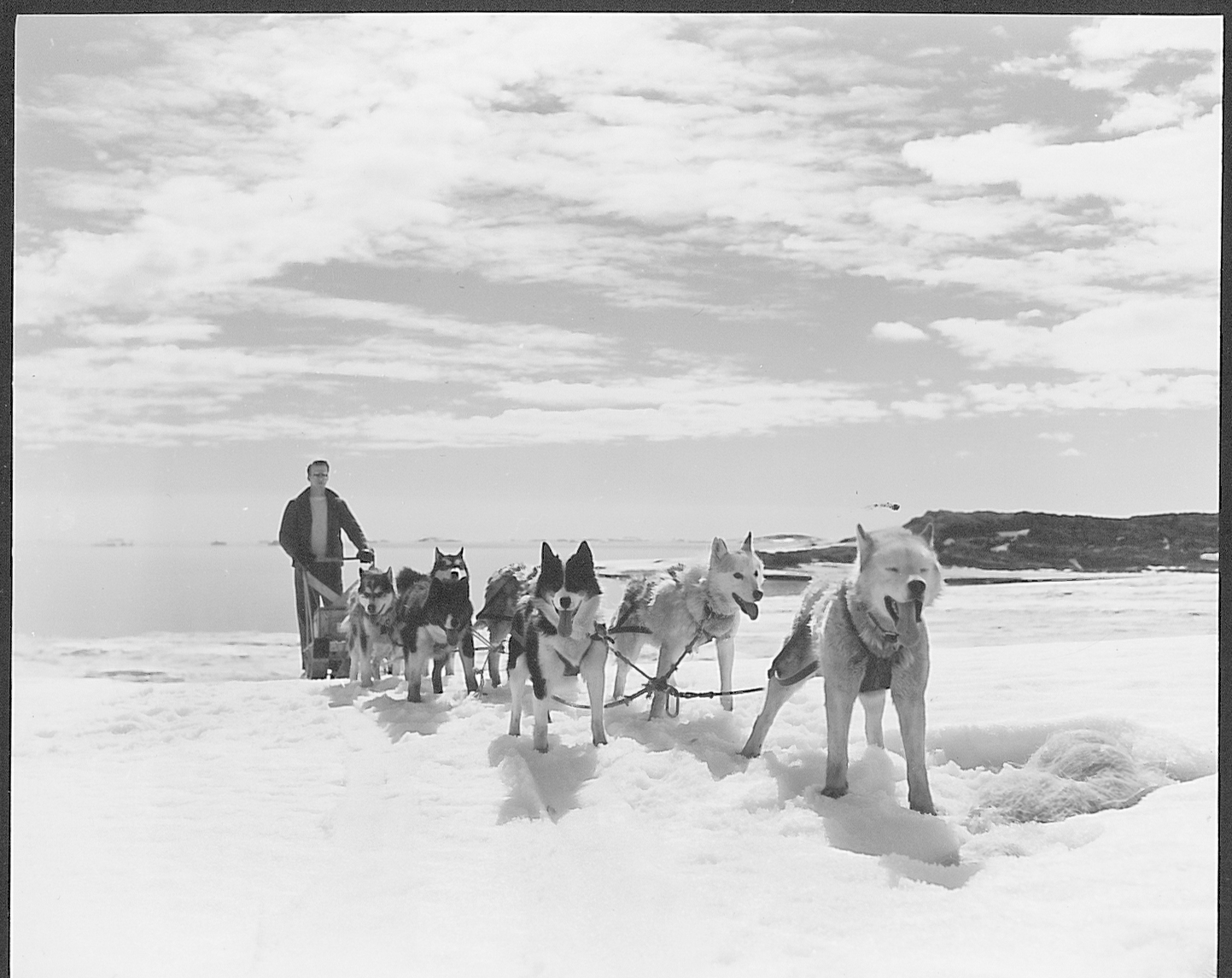Photographs and Stories... Floofy Canine Edition
Riddle time: What is the coldest, windiest, emptiest, highest and driest place on earth?
It's Antarctica! And although I wasn't physically there (darn) I was immersed in all things "ice" for 12 weeks. Late July I was hired as a temporary assistant for the communications department of the Antarctica Support Contract. The National Science Foundation manages research in Antarctica, via the United States Antarctic Program, and the ASC provides logistical support to the program.
I learned SO MUCH in those 12 weeks. One of the coolest things I got to do was to add images to the USAP Photo Library—recent photos and historical photos—and it was the historical photos that were the most fascinating. These photographs, and the stories they told, brought the history of Antarctica to life.
Of course anyone who knows me will not be surprised that I was obsessed with the history of the dogs on the ice. Big furry sled dogs, often Huskies, played an important role in the beginnings of exploration and work in Antarctica. They helped with the transportation of cargo and personnel before reliable motor vehicles were available.
These dogs were not the spoiled couch potatoes of today. They were badass athletes enduring extreme weather and difficult working conditions. Their handlers admired, and often wrote about, their determination and stamina. Working together, humans and dogs were able to achieve so much.
For this self-described dogoholic it was a happy moment every time I came across one of the many historical dog photos—especially if there were puppies. I could imagine how fun it must have been for the sailors to play with the little fuzzballs and argue over what to name them. Having dogs around likely made the difficult living conditions better, too.
Nowadays there are no dogs in Antarctica. A clause in the Antarctic Conservation Act of 1978 required that dogs and other non-indigenous animals be banned from the continent and the last dogs were removed in 1994. It makes sense. Any foreign animal and the diseases or parasites they brought with them could pose a threat to Antarctic wildlife.
Wilkes Station Dog Team — Huskies were brought to Wilkes Station by the Americans in 1957, and were augmented by some brought down by the Australians when they took over the station in 1959. Sled dogs were used in the early years of the US Antarctic Program. Dogs and other non-indigenous animals were banned with the Antarctic Conservation Act of 1978. Photo credit: US Navy, USAP Photo Library
The photographs also revealed stories about scientific research, aircraft, ships, construction, and what went on in everyday life on the ice. I'm so grateful I got to be immersed in the history of Antarctica and to see how powerful photographs can be in storytelling; to be able to research and learn more about what I was seeing; to be a part of preserving it so other generations can enjoy the stories, too, it was a wonderful experience.
One last thing: below is a photo of Bravo. He was the first dog to spend the winter at the new South Pole Station in 1957 and spending winter at the South Pole is no small feat (try to imagine about six months without a sunrise). Bravo was there with the first winter crew—a group of 18 men—and he belonged to Jack Tuck, the wintering Naval Officer in Charge. How's that for canine history-making? Good boy!
Additional reading:
Of Dogs and Men: Fifty Years in the Antarctic (book)
USAP Photo Library https://photolibrary.usap.gov
The Antarctic Sun https://antarcticsun.usap.gov/





